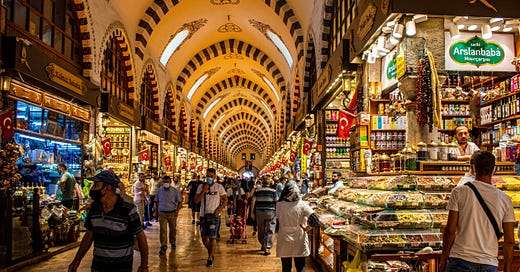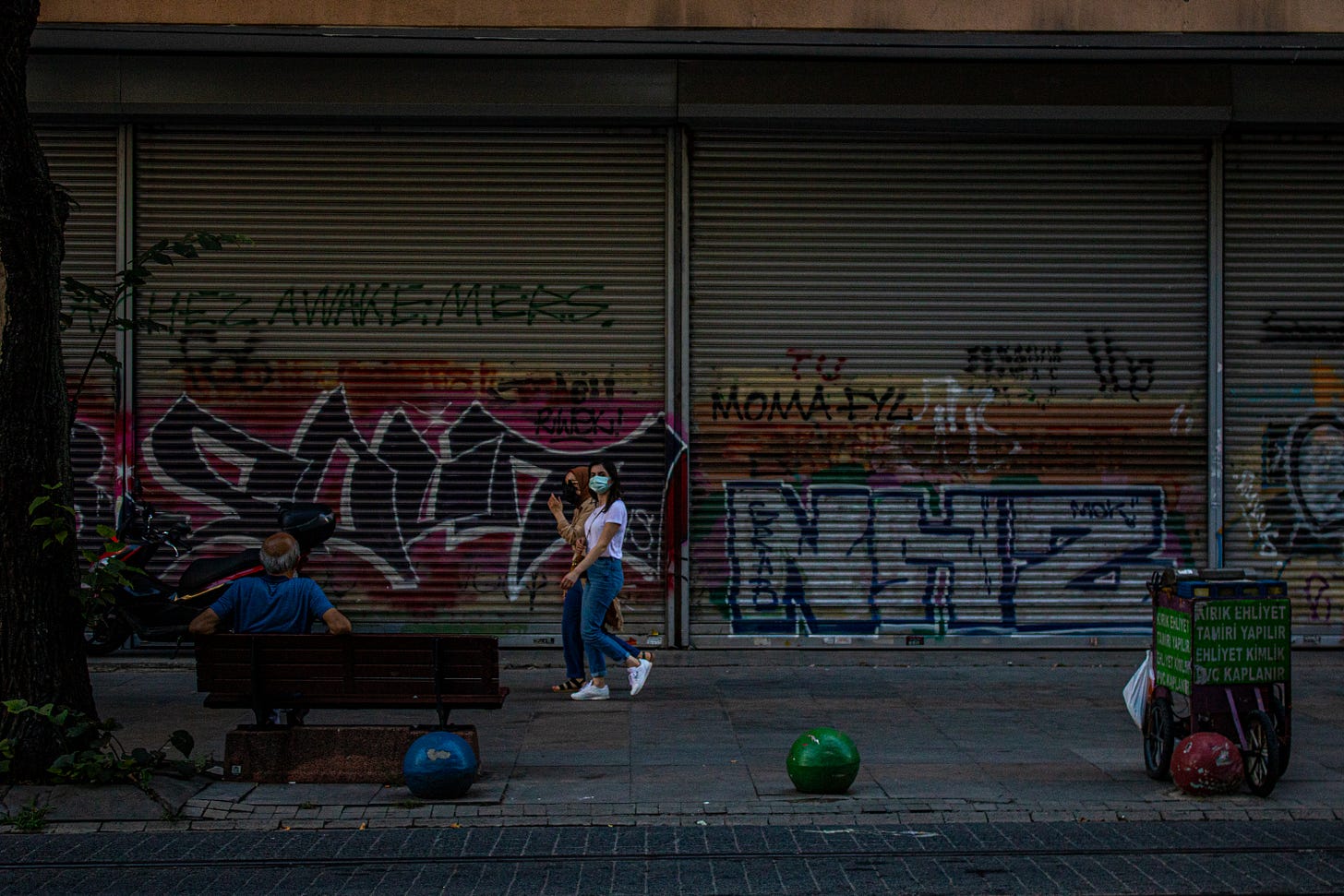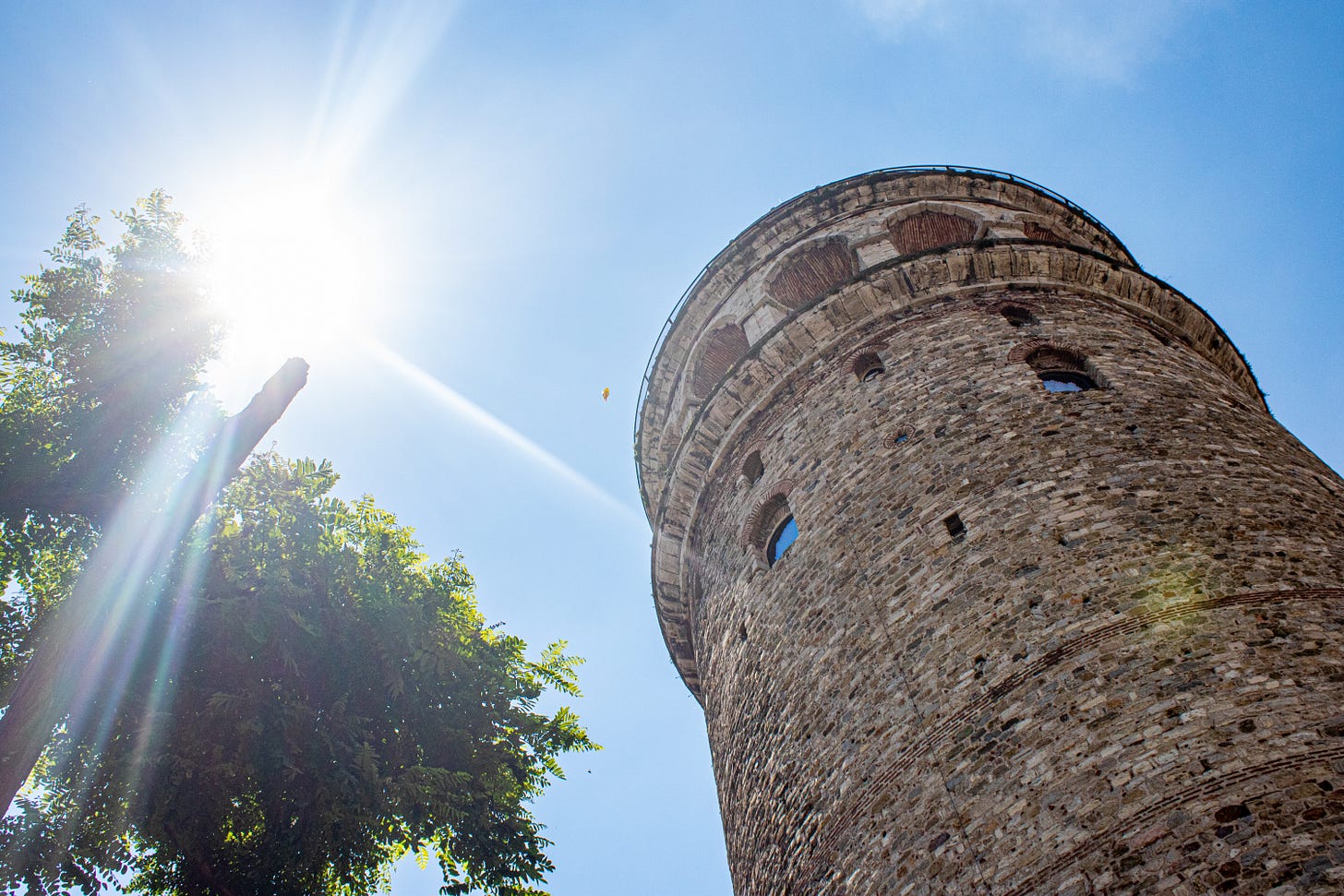Istanbul is my favourite city in the world (so far). I have been there twice and I had amazing experiences every time, so I would like to write about them and celebrate this city in 3 posts.
In the first post, I talked about the first two days of my trip in 2021, the Turkish wedding I crashed, and the European side of Istanbul. Here I want to describe what I did the other two days and the Asian side.
The Asian side of Istanbul, also known as Anatolian Istanbul, contrasts distinctly with its European counterpart across the Bosporus. Despite being less visited by tourists, this vibrant region boasts its unique charm, culture, and attractions.
Dotted with picturesque neighbourhoods, lush parks, and seaside promenades, the Asian side offers a more relaxed and residential ambience compared to the bustling energy of the European side. Neighborhoods like Kadıköy, Üsküdar, and Moda are beloved for their historic streets, eclectic dining scene, and vibrant markets.
Onur suggested I visit some places, like Maiden's Tower, Dolmabahçe Palace, Aya İrini, and the Basilica Cistern, but because of the pandemic or renovation works, they were closed. This situation forced me to look for other places where to go, and this made me discover wonderful parts of the city that I would have never seen otherwise.
On the third day, I decided to take the metro that runs under the Bosphorus and visit the Asian side. The first stop was in Kuzguncuk. This historic district is renowned for its colourful Ottoman-era houses, cobblestone streets, and vibrant community atmosphere.
Formerly a diverse multicultural hub, Kuzguncuk retains traces of its multicultural past, with synagogues, churches, and mosques coexisting harmoniously. It offers breathtaking views of the Bosphorus, with waterfront promenades, and its quaint streets are lined with charming cafes, boutique shops, and local eateries.
Kuzguncuk Evleri, or the Houses of Kuzguncuk, are a charming collection of Ottoman-era residences nestled within the picturesque neighbourhood of Kuzguncuk. Characterized by their colourful facades, intricate architectural details, and traditional wooden design, these historic houses exude timeless beauty and charm.
Dating back centuries, the Kuzguncuk Evleri are a testament to the neighbourhood's rich heritage and multicultural past. Once home to a diverse community of Greeks, Armenians, Jews, and Turks, these houses reflect the eclectic influences and architectural styles that have shaped Istanbul over the centuries.
Many of these historic houses have been lovingly restored and repurposed as boutique hotels, cafes, galleries, and shops, breathing new life into the neighbourhood while preserving its cultural legacy.
This is one of the places I loved the most in Istanbul, the particular architecture surprised me, I didn't expect it: wooden houses full of colours, the restaurants and cafes with tables and chairs on the street.
Near Kuzguncuk, just a few stops by bus, there is Beylerbeyi Palace, situated on the shores of the Bosphorus, which stands as a splendid example of Ottoman imperial architecture. Built-in the 19th century during the reign of Sultan Abdulaziz, this elegant palace served as a summer residence and hosting venue for visiting dignitaries.
Designed by the renowned architects Sarkis Balyan and Agop Balyan, Beylerbeyi Palace showcases a harmonious blend of European and Ottoman architectural styles. Its opulent interiors feature lavish furnishings, intricately adorned ceilings, and exquisite artwork, reflecting the luxurious lifestyle of the Ottoman elite.
One of the palace's most notable features is its expansive waterfront terrace, offering panoramic views of the Bosphorus and the iconic landmarks of Istanbul. The palace grounds also include lush gardens, ornate fountains, and charming pavilions, creating a serene oasis amidst the bustling city.
I visited the palace indoors and also the gardens and what I enjoyed the most was the view of the Bosphorus from the sidewalk directly on the water, I spent there most of the time I was there, amazing!
My friend Neslihan suggested I visit Kadıköy, she said that it is beautiful and characteristic and that there is a market with very cheap goods, so from the palace, I took a bus and went there.
Kadıköy is an eclectic neighbourhood that pulsates with energy and culture. As one of Istanbul's oldest districts, it boasts a rich history dating back centuries. Its charming streets are lined with historic buildings, bustling markets, and traditional Turkish coffeehouses, providing a glimpse into the city's past while embracing its cosmopolitan present.
I went there also to see the tram line that traverses through Kadıköy's vibrant streets, passing bustling markets, historic landmarks, and charming residential areas. As it meanders through the heart of the district, passengers can enjoy scenic views of the bustling Kadıköy Pier, where the ferries dock and depart, connecting Kadıköy to other parts of Istanbul.
I liked the atmosphere of this district, active with a lot of people and energy, I visited the market that Neslihan suggested, but it was too late and many stands were closed.
The day after, back to the European side, I decided to visit another market, the Spice Bazaar. Also known as the Egyptian Bazaar, it was established in the 17th century, this historic market has been a bustling hub of commerce and culture for centuries.
As one of Istanbul's oldest and most iconic markets, the Spice Bazaar entices visitors with its vibrant colours, fragrant aromas, and bustling atmosphere. Rows of stalls adorned with piles of spices, herbs, dried fruits, nuts, and Turkish delights create a feast for the senses, inviting visitors to explore and indulge in the exotic flavours of Turkey and beyond.
The Spice Bazaar is not just a marketplace; it's a cultural institution that reflects the vibrant tapestry of Istanbul's culinary traditions and trading routes. I love all the bazaars I have visited, the smells and the colours are unique and this one is as beautiful as the Grand Bazaar.
The last thing that I visited in Istanbul was the Galata Tower. Constructed in the 14th century by the Genoese as part of the defensive walls surrounding their colony of Galata, the tower has since become synonymous with the city's rich cultural heritage.
Rising 67 meters above the historic Galata district, the tower offers panoramic views of Istanbul's sprawling metropolis, including the Golden Horn, Bosporus, and the domes and minarets that dot the cityscape. Over the centuries, the Galata Tower has served various purposes, from a watchtower and lighthouse to a fire lookout and even an astronomical observatory.
Today, the Galata Tower stands as a popular tourist attraction, inviting visitors to ascend its spiralling staircase and admire the breathtaking vistas from its panoramic terrace. The tower's interior also houses a restaurant and café, where guests can savour Turkish cuisine while soaking in the majestic views.
I didn’t climb the tower, because the ticket was expensive compared to the other attractions in the city. After this visit, I went back to the hostel to take my backpack and go to the airport with destination Bishkek, Kyrgyzstan for two months of another incredible adventure.
Istanbul surprises me positively every time, not only the city itself but also the people I meet. It is still my favourite city in the world.
Next week I will tell you about my last visit in 2023.
See you soon,
Flavio































Istanbul is my favourite city too and I have seen many. Great article. The pictures are breathtaking. I was wondering how did you manage to get so many in this post. I usually start getting error message after a few.
I can't wait to visit this place!!!